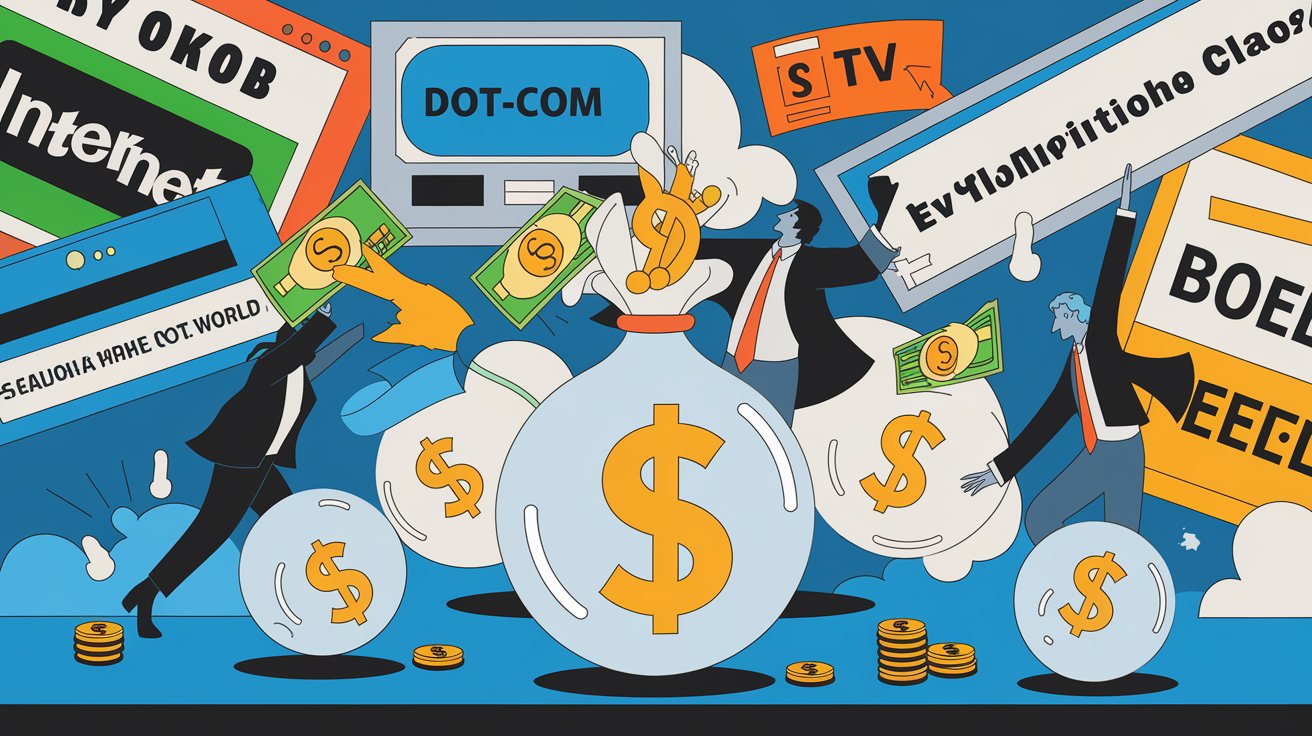During the dotcom boom, many startups started raising money through IPOs even though they didn’t have real products or solid business plans—just big promises and a website. Startups rushed to go public, offering their stocks to eager investors. Many of these companies didn’t have working products or clear plans for making money; they were running on hype and the belief that 'being online' was enough to succeed. Investors were so excited about the internet’s potential that they didn’t stop to ask hard questions. As a result, businesses with nothing but a website or an idea raised millions, promising to change industries overnight. But without real value to back them up, most of these companies quickly ran out of steam when the bubble burst.
The Beginning: The Rise of the Internet Era

The Dotcom Bubble traces its roots to the 1990s when the internet began capturing the world’s imagination. New websites and online businesses (hence the term “dotcom”) were sprouting everywhere, promising revolutionary changes in how people communicated, shopped, and worked.
Investors, excited by the potential of this new technology, poured billions of dollars into internet-based companies—many of which had little more than an idea and a website. It was the Wild West of the digital age, where businesses didn't even need solid revenue models to attract massive funding.
Why Did It Happen?

The Dotcom Bubble wasn’t caused by one single factor but rather a mix of:
- Speculation and Hype: Everyone—from institutional investors to individuals—believed the internet would transform everything overnight.
- Overvaluation of Companies: Startups were valued at billions despite having no profits (or even products in some cases).
- Media Frenzy: News outlets and analysts hyped up these companies, feeding the idea that the internet was a guaranteed gold mine.
- Low-Interest Rates: Easy access to money encouraged risky investments in unproven businesses.
Where Did It Happen?
![]()
The Dotcom Bubble primarily occurred in the United States, particularly Silicon Valley, the epicenter of the tech boom. However, its effects rippled across global markets, affecting countries that were also investing heavily in tech stocks and internet businesses.
The Impact: When the Bubble Burst

The bubble reached its peak in March 2000, but by late 2000 and into 2001, it began to deflate rapidly. Here’s what happened:
- Stock Market Crash: The NASDAQ, home to many tech companies, lost nearly 80% of its value by 2002.
- Mass Layoffs: Thousands of employees at tech firms lost their jobs.
- Bankruptcies: Companies like Pets.com, Webvan, and many others went bust.
- Investor Losses: Billions of dollars in market value evaporated, devastating not just large investors but also everyday people.
Who Survived?
While many companies didn’t make it, some emerged stronger after the bubble burst. Notable survivors include:
- Amazon: Though its stock plummeted during the crash, Amazon weathered the storm and became an e-commerce giant.
- eBay: Its solid revenue model from online auctions helped it stay afloat.
- Google: It was still a small player during the bubble but thrived later, becoming the search engine king.
- Apple: While not a dotcom startup, its focus on innovation allowed it to capitalize on the internet boom post-crash.
Today’s Scenario: Lessons from the Bubble
Fast forward to today, and the internet is no longer a novelty—it’s a necessity. But the Dotcom Bubble taught the world some important lessons:
- Hype Isn’t Enough: Companies need sustainable business models, not just great ideas.
- Valuations Need to Be Realistic: Investors now scrutinize startups more carefully, especially during funding rounds.
- Innovation Wins: Many of today’s leading companies—like Amazon and Google—succeeded because they kept innovating even after the bubble burst.
However, some experts warn that bubbles still exist, particularly in sectors like cryptocurrency, artificial intelligence, and electric vehicles. Are we heading for another crash? Only time will tell.
Final Thoughts
The Dotcom Bubble is more than just a cautionary tale—it’s a reminder of the power and pitfalls of innovation. While it left behind a trail of failures, it also paved the way for today’s internet-driven world. That’s why it remains a popular topic in podcasts, and boardrooms.
So, the next time someone brings it up, you’ll know why it mattered—and why it still does.